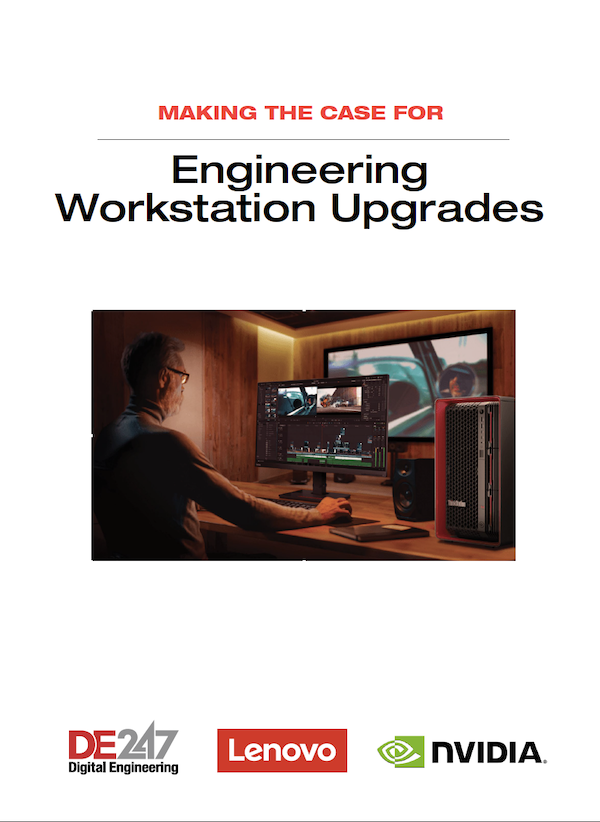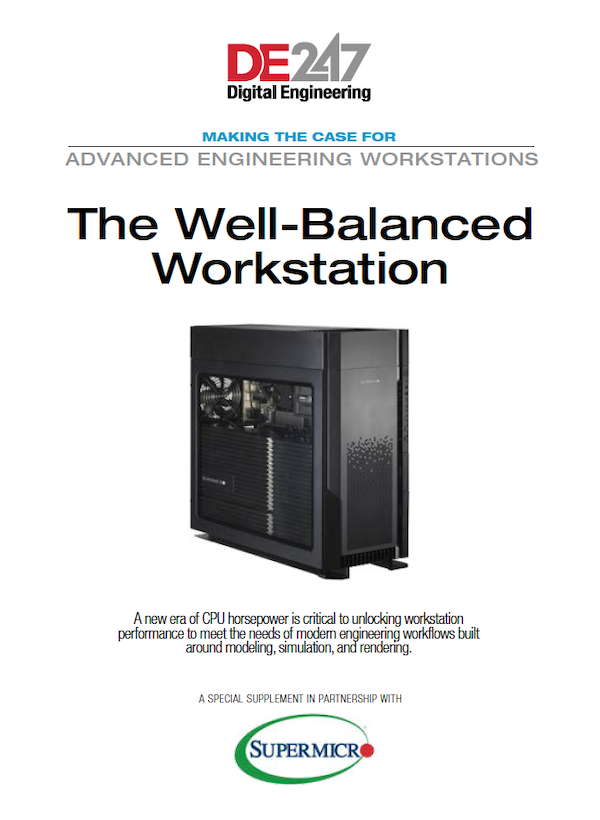AMD Targets Remote Computing for Design
The AMD Remote Workstation platform can help companies provide work-from-anywhere capabilities to designers and engineers.

AMD’s Remote Workstation platform can help designers and engineers do their work from anywhere. Image courtesy of AMD.
Latest News
June 6, 2019
Remote computing capabilities were late in coming to the design and engineering space, but hardware improvements and advances in virtualization have changed that. AMD has been working to expand the possibilities of remote computing in the design/engineering market, and recently released the Radeon Pro Software for Enterprise 19.Q2 driver with improvements to the AMD Remote Workstation platform, which now fully supports Citrix virtual apps and desktops.
“At its core, design engineering is a highly creative and collaborative industry. But unfortunately, it’s also an industry where creators too often need to be tied down to isolated cubicles to do their work,” says Glen Matthews, senior manager, Product Management at AMD. “With AMD Remote Workstation, design engineers have more freedom to explore their work and engage with colleagues. This freedom means being able to act on creative impulses wherever they are, respond to critical design challenges from a customer site, or even schedule a design review while they’re waiting for a flight.”
AMD developed its Remote Workstation offering to provide a mix of software features and remote application support so that designers can work from anywhere.
“Essentially it all boils down to making remote visual computing easier to deploy, more performant, and more accessible to design engineers,” says Matthews. “Over the last few years, AMD developed significant software infrastructure to accelerate remote visualization on our datacenter graphics products. For example, we’re powering Google’s upcoming cloud gaming solution, Stadia, and design workflow acceleration instances from Amazon Web Services.”
Matthews says that although the company’s design engineering customers saw the value of centralized datacenter graphics acceleration for workforce mobility, “leaving behind dedicated workstation capability wasn’t for everyone.”
The company began to look for ways to leverage AMD’s datacenter software IP within its workstation products. This could provide design engineers with a way to access workstation graphics in their desk-side workstations or in the datacenter from anywhere without sacrificing workflow performance.
Matthews says that AMD Remote Workstation technology is live on tens of thousands of machines and is powering HPE’s purpose-built remote workstation, the Edgeline EL4000.
Remote Convenience, Desk-Side Performance
AMD Remote Workstation is a collection of IP designed to “provide performance-parity and experience-parity with at-the-desk design workflows,” Matthews says. The software components are used by remote visualization applications from Citrix and Microsoft when paired with compatible Radeon Pro WX products. The platform includes support for Citrix Virtual Apps and Desktops, and Microsoft Remote Desktop Connection. The solution accelerates frame-by-frame capture directly from the workstation GPU’s onboard memory and provides a high-speed, fixed-function frame encode capability.
When it comes to graphics, remote computing performance is dictated by how fast a display surface can be captured and how fast it can be encoded before being sent to a client device. AMD Remote Workstation provides an interface to directly capture the screen surface from the GPU’s frame buffer. “There’s no need to traverse through numerous software layers and eat milliseconds in latency using non-hardware native capture methods,” Matthews says. “The interface to encode this frame via your GPU’s low-latency fixed function encoder performs the job faster and more efficiently than traditional CPU methods.”
AMD Remote Workstation’s virtual display technology can be used to natively emulate and render to a display in a way that is transparent to the design application. This allows design applications to be used in the same way as in traditional environments, even without output being rendered on a physical display at the desk. Matthews says the company performs extensive professional design application testing with the platform.
AMD’s remote computing efforts aren’t confined to Remote Workstation.
“We’re in a unique position to service remote computing from several fronts,” Matthews says. “Alongside AMD Remote Workstation, we also provide remote graphics acceleration via our multi-user graphics accelerators available for on-premise datacenter deployments and public cloud service providers. For example, we power Amazon Web Services AppStream 2.0 instances for graphics design. AMD also supports broader remote computing infrastructure by powering remote end points or thin clients, and increasingly more often, powering datacenter servers with our AMD EPYC server processors.”
Remote Computing Challenges
There are still obstacles to adopting remote computing for design and engineering firms. For example, while improvements in graphics capabilities have allowed design engineering firms to make giant leaps forward in product design and visualization, these processing capabilities haven’t improved in lockstep with network bandwidth and latency.
“And the often-gigantic effort of moving several thousand engineers over to virtual desktops hasn’t helped, either,” Matthew says. “While other challenges persist, the two aforementioned can create a situation of corporate proof-of-concept inertia, and an unwillingness to settle for the probability of poor network conditions impacting user experience.”
AMD sees Remote Workstation as a way for these firms to implement remote computing while still leveraging existing hardware. “There’s no impact on design engineers’ 9-to-5 experience and no large upfront capital expense is required to kickstart remote computing,” Matthews says. “Faster networks are also on the horizon. The industry anticipates that 5G networks will enable wireless low-latency high-bandwidth connections in the coming years that will make remote visualization reliable and performant everywhere. Together, easy-to-run and dependable wireless remote visual computing promises to make creativity from virtually anywhere commonplace for tomorrow’s design engineers.”
More Amazon Web Services Coverage

More AMD Coverage

More Hewlett Packard Enterprise Coverage
Subscribe to our FREE magazine, FREE email newsletters or both!
Latest News
About the Author
Brian Albright is the editorial director of Digital Engineering. Contact him at de-editors@digitaleng.news.
Follow DE







